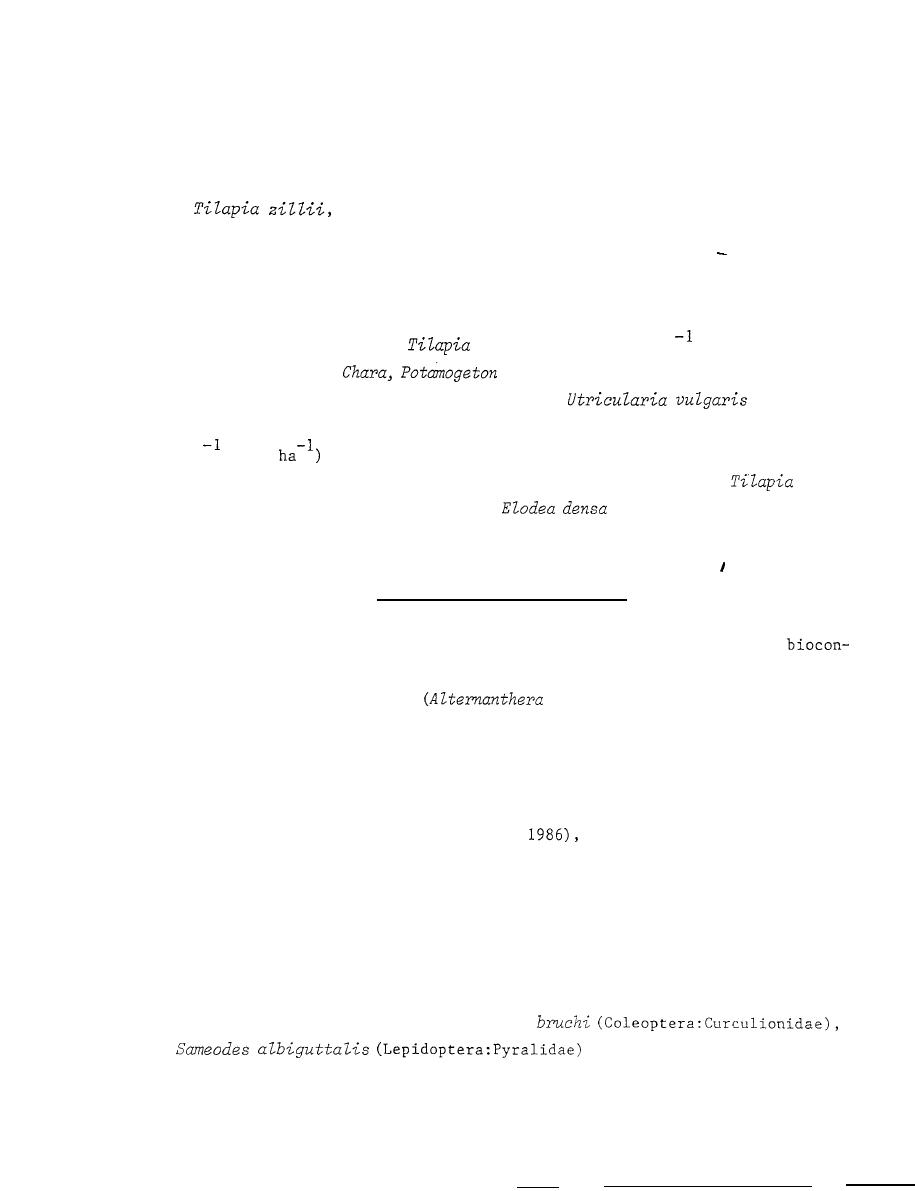
to be more difficult, and significant environmental changes can occur after
their stocking.
A nationwide research program is now under way to establish
regional food preferences and stocking rates and to assess the effectiveness
of carp introductions.
another phytophagous fish, has been used successfully to
control rooted plants and filamentous algae, but there are few literature
reports concerning this fish.
A distinct characteristic of this species is
its intolerance to prolonged exposure to temperatures below 10" C.
This
limits the use of this species for northern lakes or reservoirs.
Childers and
density of 1,000 acre
Bennett (1967) report that a
(2,500 ha-l) was
foliosus, and filamentous algae in an
sufficient to control
This fish was used to control
(bladder-
Illinois pond.
wort) in a North Carolina cooling water impoundment.
A stocking density of
(124
eliminated the problem with bladderwort, but blue-green
50 acre
algae and rooted plants then invaded the lake (Schiller 1984).
has
also been used successfully to control
in Hyco Reservoir, North
Carolina (Schiller 1984).
Insects and Plant Pathogens
The history of the deployment of insects and plant pathogens as
trol agents of nuisance exotic vegetation is in striking contrast to that of
philoxeroides) and waterhyacinth
Alligatorweed
the grass carp.
(Eichhomia crassipes) are exotic plants that have become nuisances of great
economic significance in southern waters of the United States.
Several coop-
erative investigations, involving scientists from several universities, the
US Department of Agriculture, and the US Army Corps of Engineers (e.g.,
Coulson 1977, Cofrancesco 1984, Balciunas
revealed species of insects
in the native habitats and ranges of these plants that might be imported to
the United States and released as biocontrol agents.
These insects were kept
under strict quarantine while studies were conducted to assess their speci-
ficity to the target plant and the possibility that their introduction might
also introduce parasites and diseases.
Six species of insects have been imported and released for plant con-
Neochetina eichhomiae, Neochetina
trol.
and
were imported from
138




 Previous Page
Previous Page
